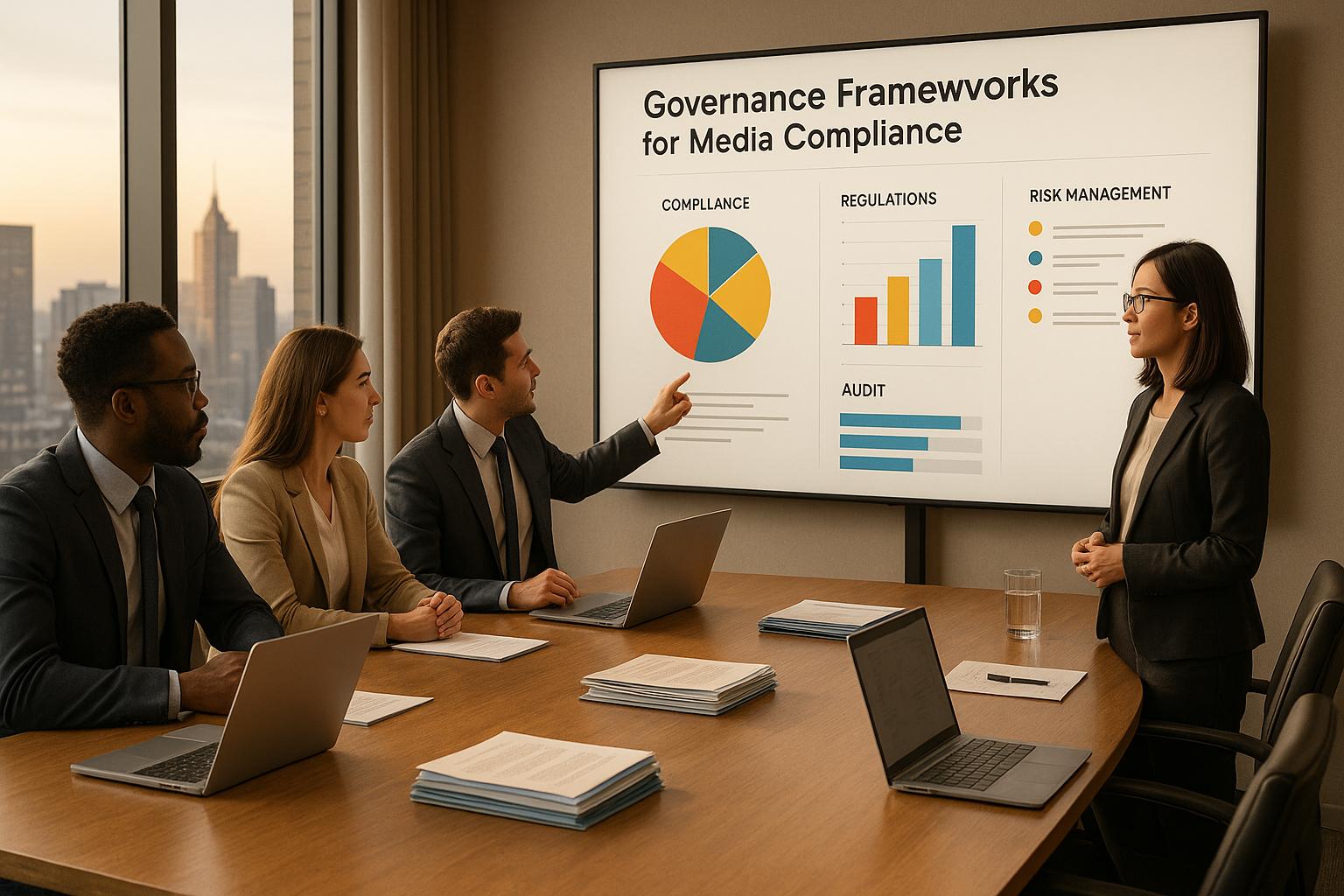Want to boost B2B engagement? Use multiple channels.
A multi-channel strategy connects with buyers across platforms like LinkedIn, email, websites, and in-person meetings. This approach builds trust, improves response rates, and increases conversions by meeting buyers where they are.
Key Takeaways:
- Consistency Matters: Keep your messaging the same across all channels.
- Data is Key: Use insights to personalize content for different audiences.
- Track Results: Measure performance across channels to refine your strategy.
The goal? Be present on the platforms your audience prefers and deliver tailored, seamless experiences.
Multi-Channel Strategies in B2B: Core Concepts
Defining Multi-Channel Strategies
In B2B, multi-channel strategies mean using a mix of communication platforms to create a unified brand experience. Instead of relying on just one channel, this approach blends digital channels (like websites, email, and social media), traditional methods (such as phone calls, meetings, and trade shows), content platforms (blogs, whitepapers, and podcasts), and customer service tools (live chat and support portals). What sets it apart is the focus on delivering consistent messaging across all these platforms, ensuring a seamless experience for the audience.
Impact on B2B Engagement
Multi-channel strategies can transform how businesses engage with their audience. By increasing response times, adding more ways to connect, and improving both conversion rates and customer retention, these strategies help build stronger, long-term relationships. For example, research from The B2B Ecosystem highlights that using three or more channels leads to higher purchase rates compared to sticking to a single channel. The reason? It meets buyers where they are while keeping the communication tailored to their needs.
To make the most of a multi-channel approach, businesses should focus on:
- Channel synchronization: Ensuring messaging is consistent across all platforms.
- Data integration: Sharing customer insights across teams for better decision-making.
- Automated coordination: Streamlining processes to manage multiple channels efficiently.
- Performance tracking: Continuously measuring results to refine strategies.
Choosing B2B Communication Channels
Finding Your Audience's Channels
B2B buyers engage across various platforms. To choose the right communication channels, you need to know where your audience spends their time and how they prefer to connect.
Here’s how to pinpoint the best channels:
- Data Analysis: Use tools like Behavly to track how your audience interacts with your content.
- Customer Journey Mapping: Outline every interaction potential clients have with your brand, from the first touchpoint to post-purchase support.
- Direct Feedback: Conduct surveys to find out which communication methods your clients prefer.
With this information, you can create a mix of digital and offline channels tailored to your audience.
Online and Offline Channel Mix
Every channel caters to different audience segments. For instance, LinkedIn might work well for engaging executives, while industry events might be better for connecting with technical experts.
Digital Channels:
- Company website and blog
- Email campaigns
- Social media (LinkedIn, Twitter)
- Video calls
- Online ads
- Mobile apps and messaging platforms
Traditional Channels:
- In-person meetings
- Industry events
- Direct mail
- Phone calls
- Print publications
- Trade shows
Choose channels that align with your audience’s habits and your business goals.
When blending online and offline methods, keep these factors in mind:
- Channel Synergy: How each platform can work together to amplify your message.
- Resource Allocation: Budget and team capacity for managing each channel.
- Tracking Performance: Ability to measure results and calculate ROI.
- Audience Preferences: Where your target audience is most active.
Channel selection isn’t static. Regularly review how each channel performs and adjust based on audience behavior. This ongoing process ensures your communication strategy stays effective and cohesive.
Building Your Multi-Channel Plan
Message Consistency Across Channels
Keep your brand voice consistent by creating a clear messaging framework. This framework should outline your core value propositions, main messages, and brand personality.
Key components to include:
- Brand Voice Guidelines: Specify preferred language, tone, and terminology.
- Visual Standards: Define your color palette, logo usage, and design elements.
- Content Templates: Develop reusable formats tailored for various channels.
- Response Protocols: Set standard procedures for interacting with customers.
Use a content calendar to align your messaging and customize formats for each channel.
Data-Driven Personalization
Once your messaging is consistent, use customer data to personalize your content. Analyze data to deliver communications that resonate with specific audiences. Tools like those from the B2B Ecosystem can help segment audiences and create tailored content for different buyer personas.
Key ways to personalize include:
- Behavioral Triggers: Track customer actions to send timely, relevant follow-ups.
- Industry-Specific Content: Address challenges unique to particular sectors.
- Account-Based Messaging: Craft custom content for high-value accounts.
- Role-Based Communication: Adjust messages based on the recipient's role in decision-making.
Multi-Channel Management Tools
To implement your strategy effectively, use tools designed for managing multiple channels. Modern B2B communication requires platforms that can handle a variety of tasks. Here's a quick comparison of essential features:
| Feature Category | CRM Systems | B2B Ecosystem Platform |
|---|---|---|
| Channel Integration | Email, social media, phone | Broad digital channels + AI capabilities |
| Analytics Capabilities | Basic tracking metrics | Advanced AI-driven insights |
| Automation Features | Standard workflows | Intelligent automation processes |
| Personalization Tools | Contact-level customization | Targeting tailored to industries |
| Campaign Management | Single-platform campaigns | Coordinated cross-channel campaigns |
When choosing tools, keep these factors in mind:
- Integration Capabilities: Ensure platforms work well together.
- Scalability: Pick tools that can grow with your business.
- Analytics Features: Look for platforms that provide in-depth reporting and insights.
- Automation Options: Choose tools that handle repetitive tasks efficiently.
- User Experience: Opt for interfaces that are easy for your team to use.
The right tools will help you maintain consistent messaging while offering personalized experiences across all channels. Prioritize solutions that combine strong channel management with detailed analytics to track engagement.
sbb-itb-01010c0
Tracking Multi-Channel Results
Performance Metrics
Measuring a B2B multi-channel strategy effectively means keeping an eye on specific key performance indicators (KPIs) across all communication channels. Here's what to focus on:
| Metric Category | Key Metrics | What to Track |
|---|---|---|
| Engagement | Channel-specific engagement | Email open rates, social media interactions, time on site |
| Conversion | Pipeline progress | Lead qualification rate, opportunity creation, deal closure time |
| ROI | Financial impact | Customer acquisition cost (CAC), lifetime value (LTV), revenue per channel |
| Attribution | Channel contribution | First-touch attribution, multi-touch attribution, assisted conversions |
Review these metrics every month and compare them to industry benchmarks. Use them as a starting point for deeper analysis with advanced analytics tools.
Analytics Tools
Analytics platforms provide valuable insights into how your channels are performing. For example, the B2B Ecosystem's QuantAIfy suite includes features like:
- Advanced Attribution Modeling: Tracks customer journeys across multiple touchpoints.
- Behavioral Analytics: Reveals how prospects engage with your content.
- Predictive Analytics: Helps forecast channel performance and spot areas for improvement.
- Custom Dashboards: Lets you monitor KPIs tailored to your specific business goals.
By integrating these tools with your CRM, you can create a unified view of how each channel is performing. This ensures your multi-channel strategy stays aligned with your audience's changing needs.
Testing and Improvement
Once you have clear performance data, focus on testing and refining your tactics:
- Run controlled tests for at least 30 days.
- Track changes in message effectiveness, response rates, conversion trends, and acquisition costs.
- Analyze results monthly to pinpoint:
- The best-performing channel combinations
- Areas that need improvement
- Ways to optimize costs
- Emerging engagement trends
Use these insights to make informed decisions about where to allocate resources and how to adjust your content strategy. Refresh your channel mix every quarter to keep your performance on track.
Related video from YouTube
Conclusion
Creating successful multi-channel B2B engagement strategies requires a focus on data, the right tools, and regular fine-tuning. As B2B communication evolves, using both established and new channels has become essential.
Here are three key factors to keep in mind:
- Strategic Channel Integration: Choose channels that match where your audience is most active. Today’s B2B buyers expect smooth experiences across platforms, from emails to social media. Tools like the QuantAIfy suite can help improve channel performance using real-time data.
- Data-Driven Personalization: Tailored experiences based on detailed analytics are at the heart of effective strategies. This ensures your messages connect with different audience groups and boost engagement.
- Continuous Optimization: Regular testing and updates are essential. Monthly performance reviews and quarterly strategy tweaks can keep your approach sharp and effective.
The future of B2B engagement depends on smartly combining channels, supported by strong analytics and AI insights. By focusing on these principles and delivering consistent messages across platforms, businesses can strengthen relationships with their B2B audiences and achieve impactful results.
Success isn’t about being everywhere - it’s about being present in the right places, in the right way. Use this targeted approach to improve your multi-channel engagement and achieve measurable growth.


